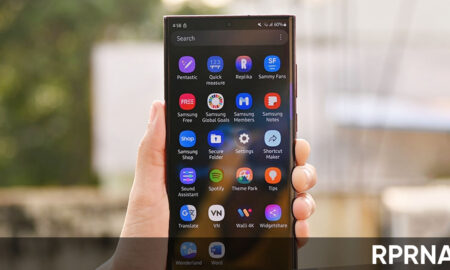Search results for "update"
-

 801Updates
801UpdatesApril 2024 update for Samsung Galaxy S23 Series live in India
Consumers in India should rejoice! After becoming available in several countries, the April 2024 update for the Galaxy S23 series is now...
-

 425Updates
425UpdatesSamsung Galaxy Tab S9 FE grabs April 2024 security update
Samsung has started to roll out a new update for Galaxy Tab S9 FE, which installs the all-new April 2024 Android security...
-

 757Updates
757UpdatesVerizon releases April 2024 update for Samsung Galaxy S21 FE and A54 5G in the US
Verizon has started to roll out an April 2024 Android security update for Samsung Galaxy S21 FE 5G and Galaxy A54 5G...
-

 496Updates
496UpdatesCarrier-locked Galaxy S23 and Z Fold 3 grip April 2024 update in the US
Samsung is expanding the reach of the April 2024 security update for carrier-locked models of the Galaxy S23 series and Galaxy Z...
-

 739Updates
739UpdatesSamsung Galaxy A52 4G April 2024 update live in Brazil
Samsung Galaxy A52 4G smartphone users have started receiving the April 2024 Android security update in Brazil. To be mentioned, the patch...
-

 704Updates
704UpdatesApril 2024 update for Samsung Galaxy Note 20 reaches the US
After the initial rollout in Brazil, Samsung has now expanded the reach of the April 2024 security update for Galaxy Note 20...
-

 768Apps
768AppsFix for One UI 6.1 folder background issue is coming with Samsung Home Up update
After upgrading to One UI 6.1, some users of Samsung Galaxy devices have started facing an abnormal issue while setting the background...
-

 710Updates
710Updates6 One UI 6.1 Galaxy devices receiving April 2024 update in Canada
After seeding dozens of Galaxy devices with the One UI 6.1 offerings, Samsung has begun to roll out an April 2024 security...
-

 731Updates
731UpdatesSamsung Galaxy Note 20 series receives April 2024 security update
Samsung has begun to push a new update for Galaxy Note 20 and Galaxy Note 20 Ultra devices, which installs the latest...
-

 447Updates
447UpdatesSamsung Galaxy S20 FE and A52s getting April 2024 security update
Samsung has started seeding Galaxy S20 FE and Galaxy A52s smartphones with April 2024 security update. Installation of this latest patch will...
